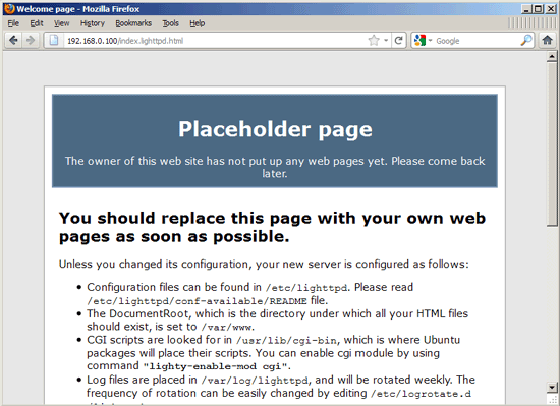
In this tutorial, we will show you how to install and configuration of Lighttpd on your Ubuntu 14.04 server. For those of you who didn’t know, Lighttpd is a fast and secure web server that has been optimized for high-performance environments. With a small memory footprint compared to other web servers, effective management of the CPU load, and an advanced feature set (FastCGI, SCGI, Auth, Output-Compression, URL-Rewriting, and many more) Lighttpd is the perfect solution for every server that is suffering load problems.
This article assumes you have at least basic knowledge of Linux, know how to use the shell, and most importantly, you host your site on your own VPS. The installation is quite simple and assumes you are running in the root account, if not you may need to add ‘sudo‘ to the commands to get root privileges. I will show you the step-by-step installation of Lighttpd on Ubuntu 14.04.
Prerequisites
- A server running one of the following operating systems: Ubuntu 14.04, and any other Debian-based distribution.
- It’s recommended that you use a fresh OS install to prevent any potential issues.
- SSH access to the server (or just open Terminal if you’re on a desktop).
- A
non-root sudo useror access to theroot user. We recommend acting as anon-root sudo user, however, as you can harm your system if you’re not careful when acting as the root.
Install Lighttpd on Ubuntu 14.10
Step 1. Installing Lighttpd.
Lighttpd is available to install from the official Ubuntu repositories, So if you want to install Lighttpd, you only have to run this command.
sudo apt-get install lighttpd
Step 2. Installing PHP5 and modules.
Ubuntu provides a FastCGI-enabled PHP5 package. We can install by issuing the following command.
sudo apt-get install php5-cgi php5-mysql
Enable fast-CGI support.
sudo lighttpd-enable-mod fastcgi sudo lighttpd-enable-mod fastcgi-php
Step 3. Start the Lighttpd server.
/etc/init.d/lighttpd force-reload
Step 4. Testing Lighttpd webserver.
To make sure everything is installed correctly we will now test Lighttpd to ensure it is working properly. Open up any web browser and then enter the following into the web address:
http://localhost/ or http://your.ip.addr.ess

Note: Lighttpd’s default document root is /var/www on Ubuntu, and the configuration file is /etc/lighttpd/lighttpd.conf. Additional configurations are stored in files in the /etc/lighttpd/conf-available.
Congratulations! You have successfully installed Lighttpd. Thanks for using this tutorial for installing the Lighttpd web server on Ubuntu 14.04 system. For additional help or useful information, we recommend you to check the official Lighttpd website.